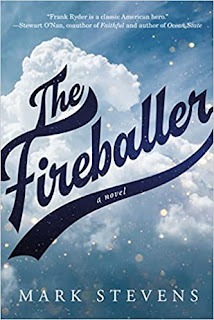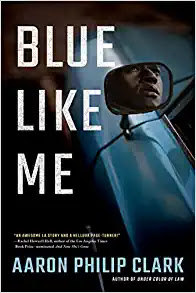
Her lifelong interest in true crime and experiences as an attorney have provided her with plenty of writing material. Grawl enjoys traveling and spending time with her husband and their two dogs.
She applied the Page 69 Test to her debut novel, One of Those Faces, and reported the following:
From page 69:Visit Elle Grawl's website.I opened the door and peered out. “How can I help you?”This excerpt is Harper’s, my protagonist’s, first interaction with the Detective investigating a murder in the neighborhood. The Page 69 Test worked pretty well. This section gives the reader a glimpse of Harper’s inner monologue during the tense discussion and provides a great introduction to this key player in the book.
The man straightened up. “I’m Detective Wilder. We’re currently investigating a suspected homicide in the area,” he recited, his tone growing flatter with each syllable.
Suspected homicide? What else could it be?
“A few days ago the body of a young woman was discovered in the alley just across the street from you. I’ve been interviewing people in the neighborhood to see if anyone saw or heard anything. I stopped by your place before, but you were out, I guess.” He glanced over the top of my head into my apartment.
I narrowed the gap between my body and the door. “Homicide?” I asked. I didn’t know why I was acting coy. Half the neighborhood had huddled around when Holly’s body was recovered.
He stared at me for a second. “Yes, a body was found just a few days ago. Have you been out of town?”
“No, I’ve just been busy.”
He observed me for a long moment. “Do you have a minute to answer a few questions?”
I nodded, the alcohol from the night before burning the edge of my throat, threatening to come up. “Absolutely.”
He glanced behind me at the door half-open. “Is there a reason I can’t come in?”
I stepped out and let the door completely shut behind me. “I have a cat. He might get out,” I said.
He pulled out one of those tiny notepads as if we were on Law & Order and jotted something down. Something about my cat, I guessed.
He looked back up at me. “What’s your full name?”
I hesitated. Where would this information appear if I told him? If I told him about that night, would a reporter show up next and cite me as a witness?
You’re not a kid anymore. He can’t do anything to you.
Still, I couldn’t bear the thought that he might find me here. “Isabella Mallen,” I lied.
In One of Those Faces, this murder investigation is the inciting incident and plays a major role in the rest of the story.
Coffee with a Canine: Elle Grawl & Olive and Truffle.
My Book, The Movie: One of Those Faces.
--Marshal Zeringue




























